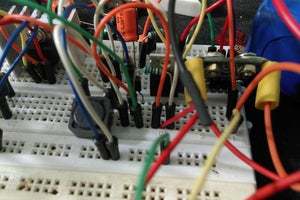As the name suggests, the car charger is used to recharge the battery of a vehicle. It comes at many sizes, shapes, options and prices. Some models have a gauge or dial to read the charge level. The position of the dial hand defines this. That said, the charger must first be connected to the battery. The reading of the dial will be done during the recharge of the latter. In the rest of this article, we will present the approach to follow. If you want to buy the Best AGM Battery then you must know which one is best.
Table of Contents
Instructions
Step 1: Connect the charger to the battery
As we pointed out before, the dial allows you to know the charge of the voltage of your battery. So we must start by connecting the charger to the latter. But before, take care to check the level of electrolyte in the battery. Complete if necessary, then clean the battery. Then check if there is a food source near the car.
If so, you can leave the battery in the vehicle, provided that the charge rate is between 3 or 4 amperes. If not, you will need to remove the battery and bring it closer to the power point. Since your car has an alternator, you must first disconnect the battery terminals. Also remove the separate cell plugs, if installed.
After that, connect the positive charger wire (often red) to the positive battery terminal. Next, hang the black clip at the negative post. Once finished, you can now switch on the charger.
Step 2: Turn on the charger
You will now connect the charger to the mains. Then turn it on via the ignition button. Some models turn on automatically when compared. For more advanced chargers, you need to make volts and amps settings before you turn them on. They often have two voltage positions: 6/12 Volts, 12 / 24V … Some integrate a single charging option of 12 volts because most car batteries are 12 volts.
As for the amp setting option, it will depend on how you want to charge your battery, especially quickly or slowly. The higher the intensity, the less battery, will take time to load. On some chargers, you will even find a high function or “Start.” This will allow you to start your car battery directly from the charger. Once you have made the settings, you can now turn on this one.
Step 3: Reading the dial
As soon as you turn on the charger, the gauge will raise you a high charge rate. Depending on the settings made, the needle can stabilize at 1/3 of the dial. As the battery charges, the needle will begin to descend gradually. No worries, that does not mean that your device has a problem. On the contrary, it’s completely normal.
During charging: Voltage rises in the battery, but the current decreases in the charger. The needle may go down to zero (0). If the battery is completely flat, the charge may take longer. However, keep an eye on the battery voltage to avoid overcharging. Depending on the model you have, you will find a timer. This will allow you to program the charging time of your battery.
When the delay is reached, the unit will turn off automatically. This is a way of avoiding any risk of overcharging the battery. That said, the tension can contact and even exceed 14volts. If you did not remove the battery from the engine in advance, it is likely to damage the devices that remained connected.
When the battery is full, turn off the charger and disconnect it from the mains. Then remove the clamps, as they may ignite the gas released during charging. Before installing the battery in the car, also make sure that no electric circuit is lit. It is not uncommon for a spark to occur when one wants to place the second terminal of the battery.
